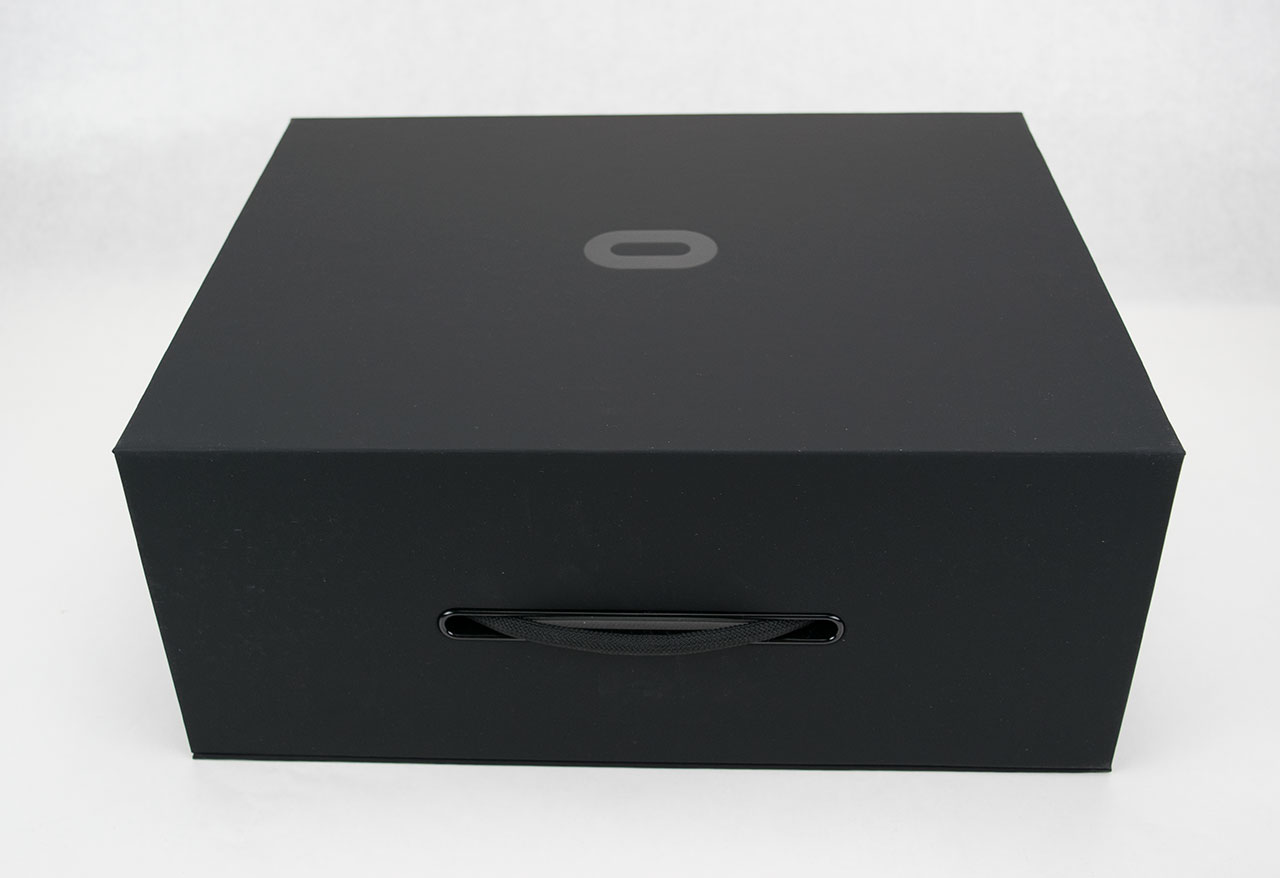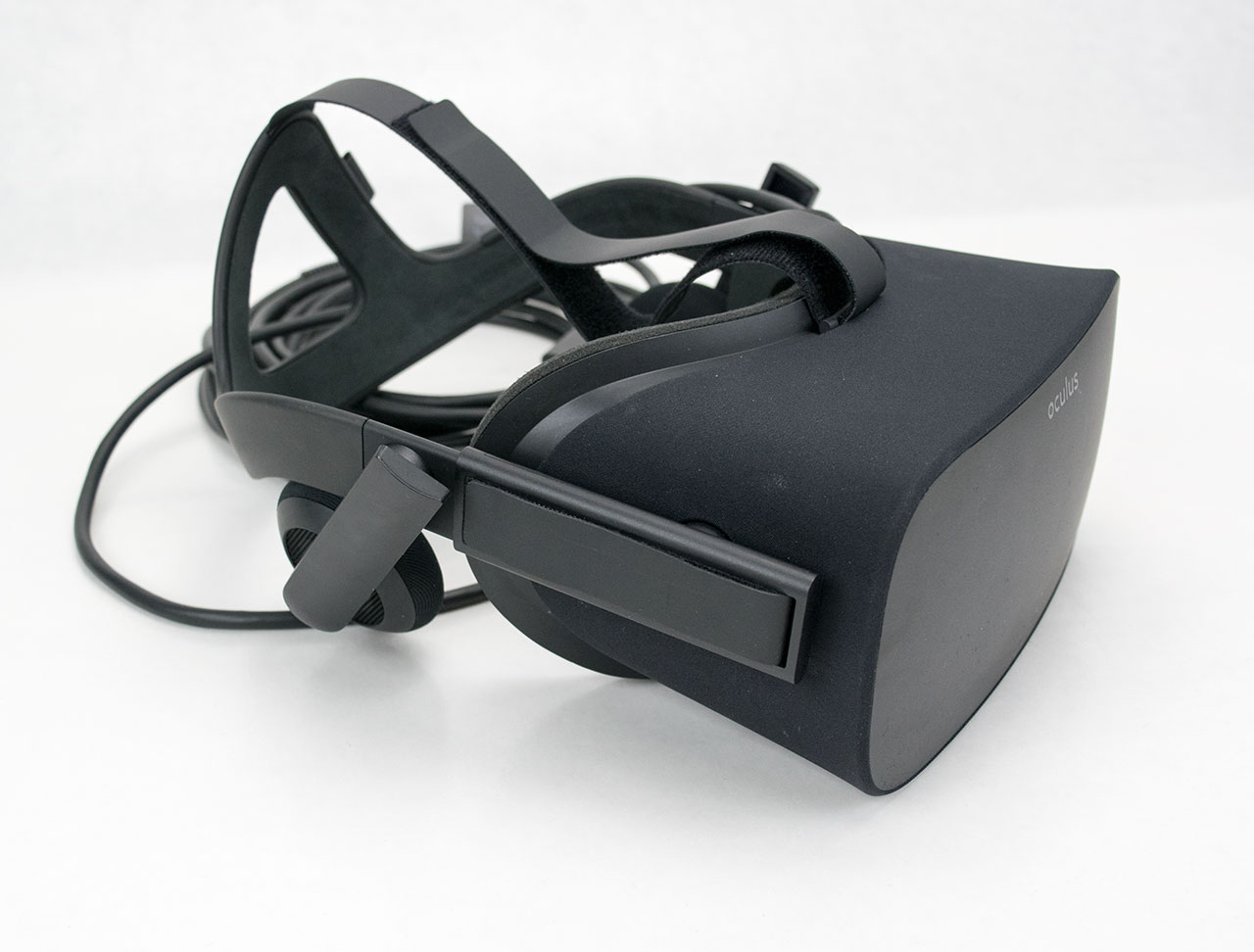The Oculus Rift Review
The Oculus Rift, the first high-end, consumer VR head-mounted display is now available, and it's poised to usher in a future of immersive experiences.
Why you can trust Tom's Hardware
Conclusion
I remember stumbling upon the Oculus Rift Kickstarter page on the very first day of its campaign. I watched the pitch video a half-dozen times. I showed it to everyone I knew. Then, I hemmed and hawed over whether or not to buy one for myself. The endorsements and praise that John Carmack (id Software,) Gabe Newell (Valve,) Michael Abrash (Valve,) Cliff Bleszinski (Epic Games) and David Helgason (Unity) piled onto the Rift had me convinced I had to own a VR headset.
Before the Kickstarter campaign ended, I talked myself out of buying in. I’m not a developer, and I have no interest in being one. Fortunately, a friend of mine introduced me to the Rift DK1 shortly after its release. Little did I know, three more years would pass before a retail version showed up at my door. But I also didn't think we'd be seeing this level of sophistication in a first-gen HMD.
My first experience with the Rift was a crude roller coaster ride you've probably seen reaction videos to on YouTube. It was blurry, lacked head tracking and triggered debilitating vertigo that probably wasn't helped by my fear of heights. It’s incredible what a few years of refinement by some of the most brilliant minds in gaming, backed by millions of dollars, can create.
As a result, Oculus has some very tall expectations to satisfy and a lot of convincing to do on its road to widespread VR adoption. We believe that the Rift is a good start. The visual clarity you get today far exceeds my initial experience, and I believe it'll go beyond what most enthusiasts anticipated. Further, the headset is very comfortable when it's adjusted correctly. And if the few "civilians" we strapped in to the Rift are any indication, anyone unfamiliar with VR is going to be blown away.
On the other hand, at $599, the Rift is a very expensive accessory that requires a high-end PC. Only the most dedicated gamers own such top-shelf hardware, and those folks want to play demanding AAA titles that push the boundaries of graphics technology. The immersive stories you often get from movie studio-quality productions are mostly missing from VR right now. Development is in its infancy. And although there are 30 titles launching alongside the Rift, most cater to a more casual audience.
In short, the VR content available right now may not be what hardcore gamers are looking for. It'll undoubtedly surface over time (and with 100+ titles expected this year, that killer app may not be far off), but in the meantime, Oculus is going to lean on the novelty factor to keep customers engaged as the ecosystem matures. Multi-player experiences like EVE: Valkyrie, Project Cars and Radial-G will probably provide the longest-lasting entertainment, but we'll see if it's enough to satisfy someone spending $600 on a gaming accessory.
Lower-priority, but still important, we'd like to see Oculus clarify its comfort ratings. They currently don't paint a very clear picture about what you should expect from different games. For example, Project: Cars is very fast and immersive, but it never felt "intense." Dreadhalls, on the other hand, is very intense. Not only is it unnerving and creepy, but it's also controlled from a first-person perspective. The motion can be incredibly uncomfortable in VR. Both games should have different comfort levels. They may both be "intense," but the racing game makes your heart beat quickly, while Dreadhalls is intense because it's jarring. Because those labels may differ person to person, Oculus would be wise to gather community input to inform these ratings.
Get Tom's Hardware's best news and in-depth reviews, straight to your inbox.
Finally, the VR industry is moving incredibly fast, and we’ve seen some very big breakthroughs in the last year, particularly around controllers. Hand controls make a tremendous difference in VR, and I felt myself longing for them during this review. The Xbox One controller works fine in that it is familiar to many gamers; however, a gamepad is not a natural input. If anything broke the feeling of “presence” for me, it was the controller in my hand. Take it from someone spoiled by the Vive's tracked hand controllers and my early experiences with Oculus Touch: when you remove that extra dimension, it becomes clear just how significant Touch will become to the Rift's story.
So, Should You Buy The Rift?
Oculus' final effort is an incredible piece of hardware, and a year ago it practically stood alone. But now HTC's Vive is right on its heels (like, right there) with room-scale tracking and controllers. We simply have to compare them side by side. And that works out fine. If you pre-ordered a Rift, you already paid your $600. If not, you'd be in a line almost four months long anyway. The short wait for a more definitive conclusion should be good for some peace of mind.
To be sure, we're bouncing back and forth between two awesome VR platforms. We're not doubting whether VR will succeed. Stereoscopic gaming on monitors? Yeah, that never really got us giggling uncontrollably. This stuff does. Pulling the Rift over your head feels like stepping into the future. Despite our critiques, we think the experience is well worth the cost. Now it's a matter of deciding which experience to get behind. You'll be hearing more from us on that very soon. In the meantime, try to find a friend with a Rift, fire up EVE: Valkyrie and just try not to smile.
MORE: The History of Virtual RealityMORE:
AMD Liquid VR ExplainedMORE:
Nvidia GameWorks VR ExplainedMORE:
Oculus' Uncompromising Obsession With Hardware
MORE: The First 30 Oculus Rift Launch Titles
MORE: The Past, Present, And Future Of VR And AR: The Pioneers SpeakMORE:
Audio, Audio, Audio: The Key To Virtual Reality Immersion Is The Audio
Kevin Carbotte is a Contributing Writer for Tom's Hardware, covering Graphics. Follow him on Twitter..
Chris Angelini is Editor Emeritus at Tom's Hardware. Follow him on Twitter and Google+.
Follow us on Facebook, Google+, RSS, Twitter and YouTube.
Kevin Carbotte is a contributing writer for Tom's Hardware who primarily covers VR and AR hardware. He has been writing for us for more than four years.

